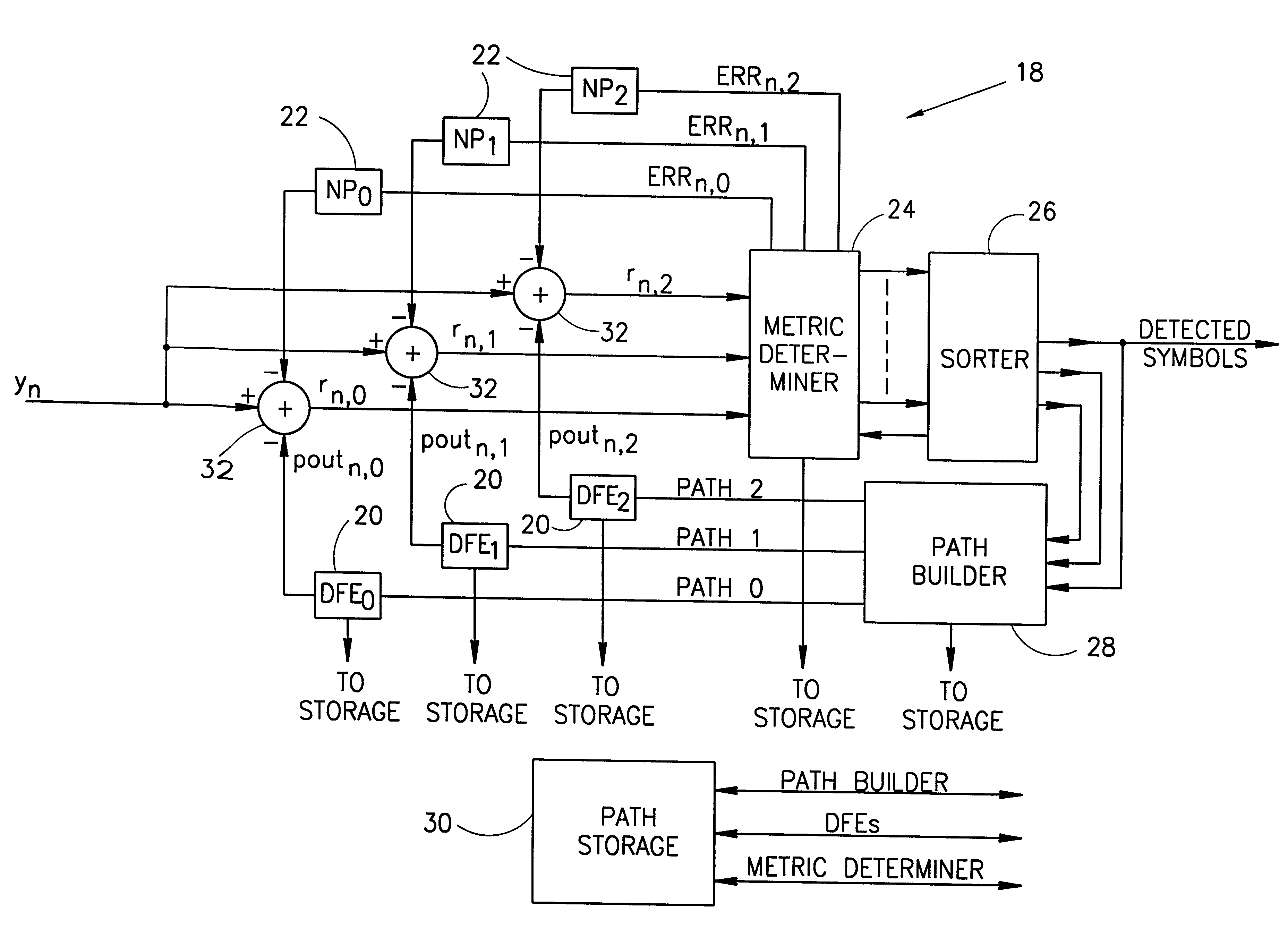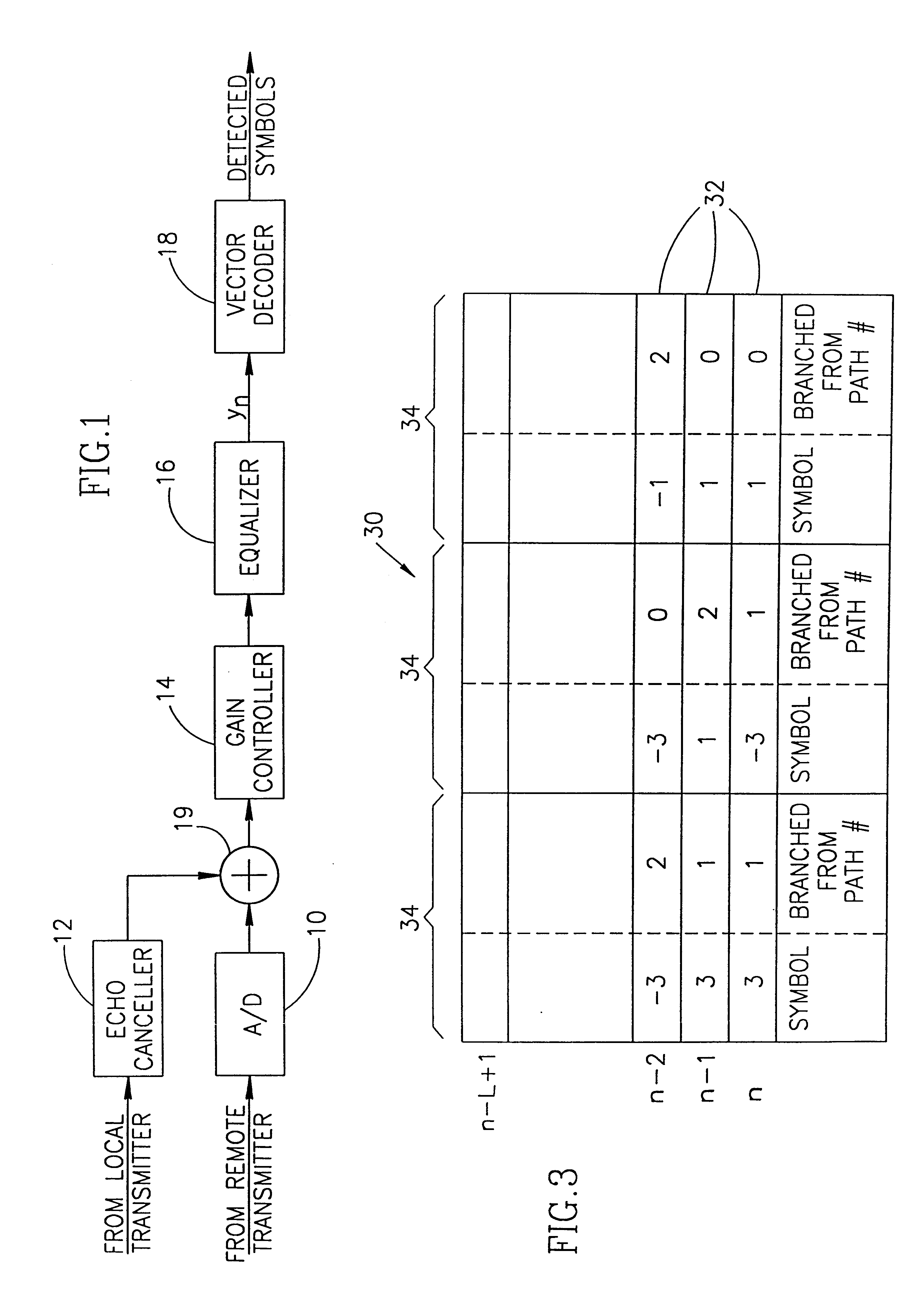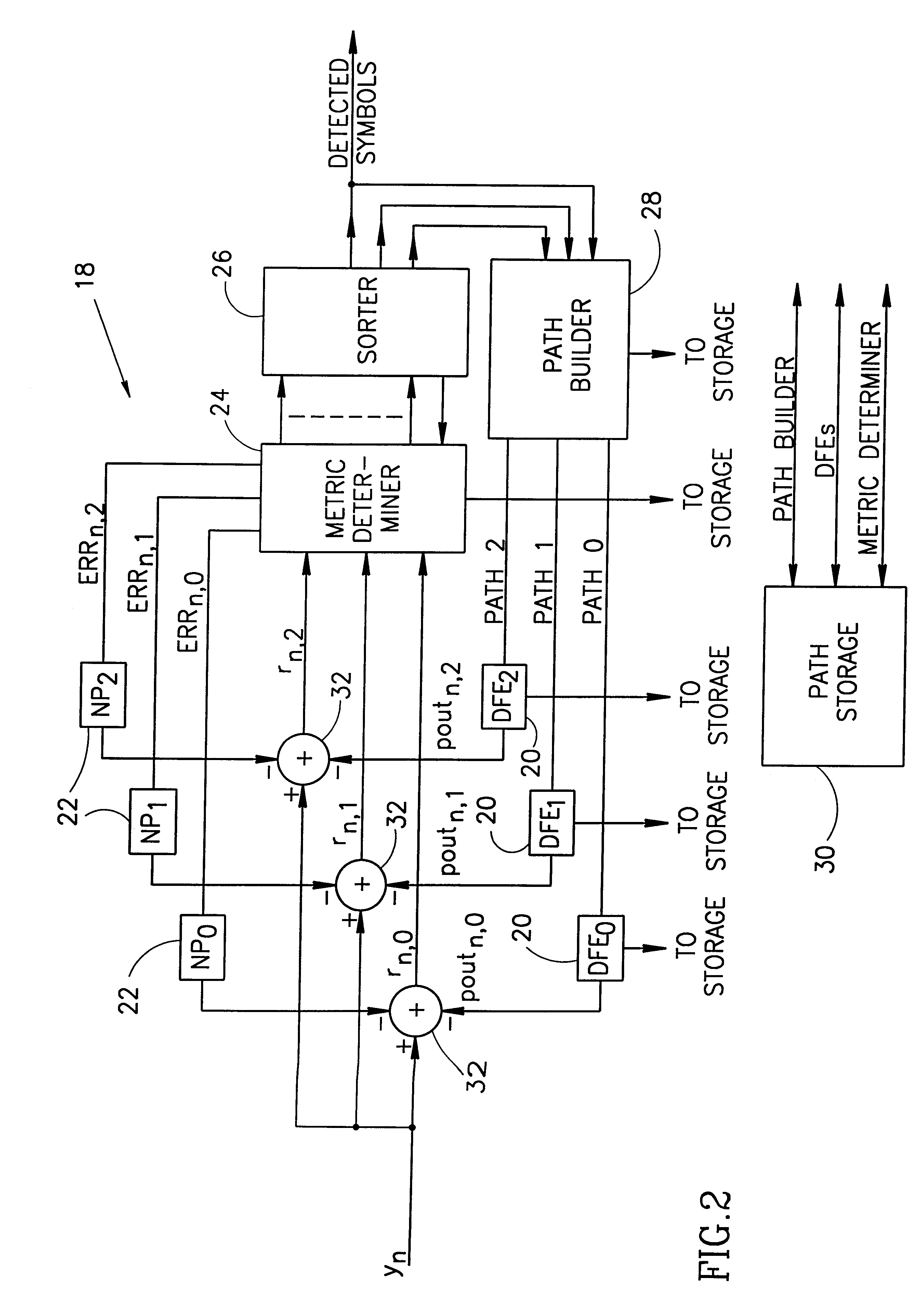Method and apparatus for performing data sorting in a decoder
a decoder and data sorting technology, applied in the field of telephone conversation high bit rate receivers, can solve the problems of low bit rate, low bit rate, and low bit rate, and achieve the effect of high bit ra
- Summary
- Abstract
- Description
- Claims
- Application Information
AI Technical Summary
Benefits of technology
Problems solved by technology
Method used
Image
Examples
Embodiment Construction
Reference is now briefly made to FIG. 1 which illustrates a standard, full duplex, data communications receiver. The receiver comprises an analog-to-digital converter 10, an echo canceller 12, a gain controller 14, a linear equalizer 16 and a vector decoder 18. The A / D converter 10 receives an analog, modulated signal from a remote transmitter (the signal to be decoded) and converts it to a digital modulated signal. The analog signal comprises the symbols to be decoded as well as echoes and noises. The analog signal can be sent along any type of communication channel; for example, it can be sent along copper loops or via satellite. The communication can be with binary modulation (symbol values of 1 and -1), 2B1Q modulation (e.g. symbol values of -3, -1, 1, 3) or any other Q-ary modulation method.
The local transmitter, not shown, transmits a signal at the same time that the receiver receives a signal. Since the two signals (incoming and outgoing) travel along the same physical line, ...
PUM
 Login to View More
Login to View More Abstract
Description
Claims
Application Information
 Login to View More
Login to View More - R&D
- Intellectual Property
- Life Sciences
- Materials
- Tech Scout
- Unparalleled Data Quality
- Higher Quality Content
- 60% Fewer Hallucinations
Browse by: Latest US Patents, China's latest patents, Technical Efficacy Thesaurus, Application Domain, Technology Topic, Popular Technical Reports.
© 2025 PatSnap. All rights reserved.Legal|Privacy policy|Modern Slavery Act Transparency Statement|Sitemap|About US| Contact US: help@patsnap.com



